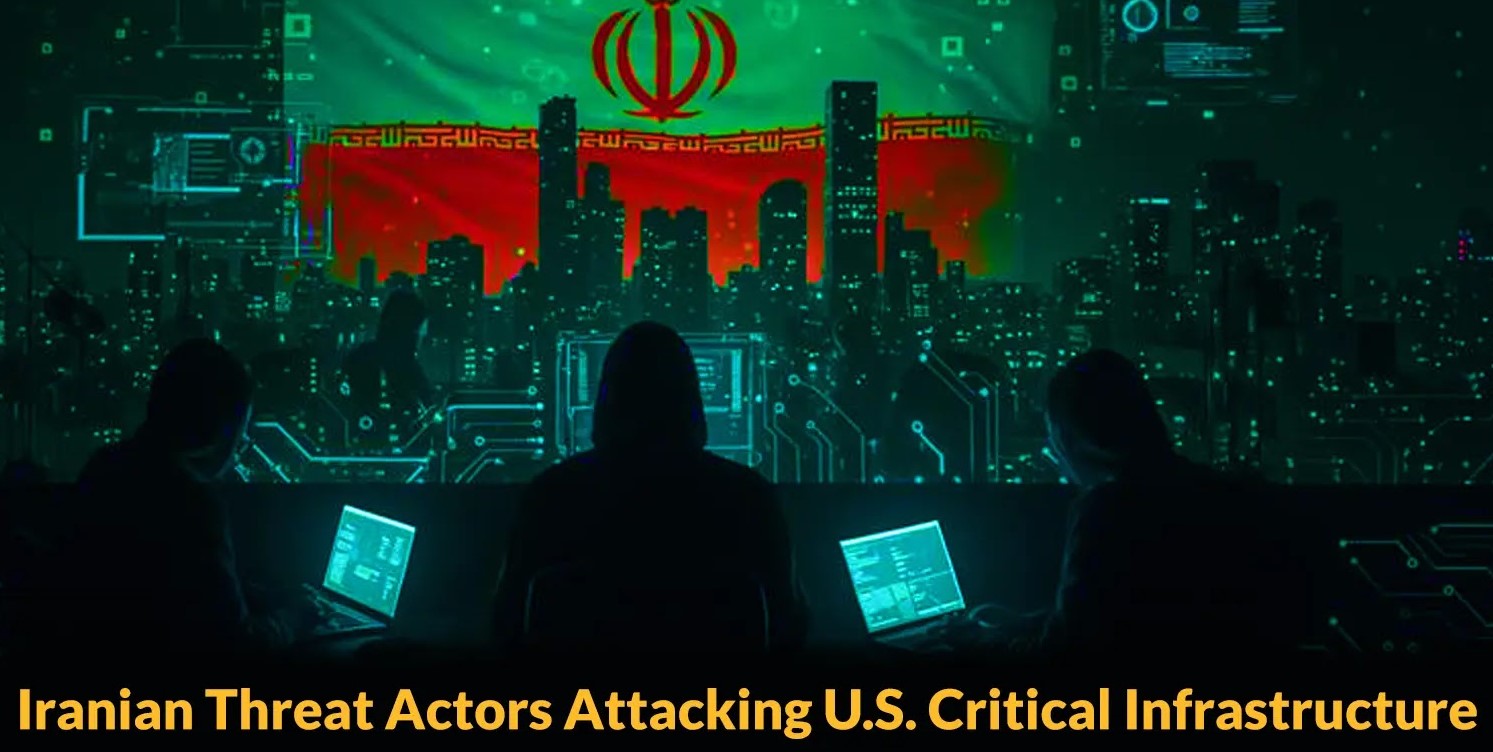
Iranian Threat Actors Attacking U.S. Critical Infrastructure Including Water Systems
The Silent Siege: Iranian Cyber Attacks on U.S. Critical Infrastructure Escalates
The digital battleground has opened a new, disturbing front: America’s vital critical infrastructure is under concentrated attack. From the water we drink to the electricity that powers our homes, these essential services are increasingly becoming targets for state-sponsored cyber operations. Recent intelligence points to a dramatic escalation in aggression from Iranian threat actors, demanding urgent attention from cybersecurity professionals and critical infrastructure operators alike.
Intelligence Group 13: The Spearhead of Iranian Cyber Operations
At the center of this escalating threat is Intelligence Group 13, a sophisticated cyber operation linked directly to Iran’s Islamic Revolutionary Guard Corps (IRGC) Shahid Kaveh Cyber Group. This group has demonstrated a clear intent and capability to disrupt or compromise operational technology (OT) and industrial control systems (ICS) that underpin U.S. critical infrastructure. Their targets are not theoretical; they are actively pursuing water treatment facilities, electrical grids, and various other industrial control systems nationwide.
Understanding the Threat Landscape: Water Systems and Beyond
The direct targeting of water systems is particularly concerning. Compromising water treatment facilities could lead to severe public health crises, operational shutdowns, and widespread panic. Beyond water, Intelligence Group 13’s focus extends to:
- Electrical Grids: Disrupting power distribution, leading to blackouts that cripple economic activity and daily life.
- Industrial Control Systems (ICS): Gaining unauthorized access to systems that control everything from manufacturing plants to transportation networks, enabling sabotage or data exfiltration.
- Operational Technology (OT): Exploiting vulnerabilities within the hardware and software that manage physical processes, risking physical damage or operational failure.
These attacks underscore a shift from mere espionage to potential disruption and destruction, posing a direct threat to national security and public welfare.
Tactics and Techniques Employed by Iranian Threat Actors
While specific indicators of compromise (IOCs) for Intelligence Group 13 are often closely guarded, their sophisticated nature suggests a range of tactics common among advanced persistent threat (APT) groups:
- Spear Phishing and Social Engineering: Targeting key personnel with deceptive emails or communications to gain initial access.
- Supply Chain Attacks: Compromising trusted software or hardware vendors to infiltrate target networks.
- Exploitation of Known Vulnerabilities: Leveraging publicly disclosed vulnerabilities in industrial control systems or network devices. While specific CVEs linked directly to Intelligence Group 13’s current campaigns are not often public immediately, system administrators should remain vigilant for patched vulnerabilities like those potentially affecting common ICS/SCADA components. For example, recent advisories for vulnerabilities in certain industrial control systems products (e.g., CVE-2023-38604 or CVE-2023-38605) highlight the constant need for patching and vigilance. Organizations should regularly consult official sources like CISA’s ICS advisories.
- Custom Malware Development: Deploying sophisticated, tailored malware designed to evade detection and operate within OT environments.
- Insider Threats and Recruitment: Potentially leveraging individuals with access to critical networks.
Remediation Actions and Proactive Defense Strategies
Protecting critical infrastructure requires a multi-layered, proactive defense strategy. Operators and IT professionals must implement robust security measures and maintain constant vigilance.
- Implement Strong Access Controls:
- Enforce Multi-Factor Authentication (MFA) for all remote and privileged access to OT/ICS networks.
- Implement the principle of least privilege, ensuring users and systems only have the minimum necessary access.
- Regularly review and audit user accounts and permissions.
- Network Segmentation and Isolation:
- Physically and logically separate IT networks from OT/ICS networks.
- Use firewalls and secure gateways to control traffic flow between segments.
- Implement a “zero trust” architecture for critical systems.
- Patch Management and Vulnerability Assessment:
- Establish a rigorous patch management program for all IT and OT systems, prioritizing critical vulnerabilities.
- Regularly conduct vulnerability scans and penetration tests on both IT and OT environments.
- Subscribe to threat intelligence feeds from government agencies (e.g., CISA) and reputable cybersecurity firms.
- Incident Response Planning and Tabletop Exercises:
- Develop comprehensive incident response plans specifically for OT/ICS environments.
- Conduct regular tabletop exercises to simulate attacks and refine response procedures.
- Ensure communication plans are in place for notifying relevant authorities and stakeholders during an incident.
- Employee Training and Awareness:
- Provide ongoing cybersecurity training for all employees, with a focus on recognizing phishing attempts and social engineering tactics.
- Educate OT personnel on specific threats to industrial control systems.
- Supply Chain Risk Management:
- Vet all third-party vendors and suppliers for their cybersecurity practices.
- Implement contractual agreements that mandate secure development practices and incident notification.
Recommended Tools for ICS/OT Security
| Tool Name | Purpose | Link |
|---|---|---|
| Claroty Continuous Threat Detection (CTD) | Comprehensive OT/ICS network monitoring, threat detection, and vulnerability management. | https://claroty.com/platform/ctd/ |
| Dragos Platform | Industrial cybersecurity platform for asset visibility, threat detection, and response in ICS/OT environments. | https://www.dragos.com/platform/ |
| Nozomi Networks Guardian | Real-time visibility, threat detection, and operational intelligence for OT and ICS networks. | https://www.nozominetworks.com/products/guardian/ |
| Tenable.ot | Vulnerability management and threat detection for OT environments, integrating with broader IT security. | https://www.tenable.com/products/ot-security |
| OTORIO RAM (Risk Assessment & Management) | Risk assessment and security management for industrial control systems. | https://otoriocyber.com/platform/ram/ |
Conclusion
The threat posed by Iranian state-sponsored cyber actors like Intelligence Group 13 to U.S. critical infrastructure is undeniable and escalating. Protecting our essential services requires vigilance, robust cybersecurity practices, and continuous collaboration between government agencies and private sector operators. Understanding the adversary, implementing strong defensive measures, and preparing for inevitable incidents are paramount to safeguarding the nation’s vital systems from these sophisticated and determined threats.





